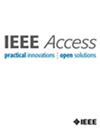Monitoring Respiratory Motion With Wi-Fi CSI: Characterizing Performance and the BreatheSmart Algorithm
IF 3.4
3区 计算机科学
Q2 COMPUTER SCIENCE, INFORMATION SYSTEMS
引用次数: 7
Abstract
Respiratory motion (i.e., motion pattern and rate) can provide valuable information for many medical situations. This information may help in the diagnosis of different health disorders and diseases. Wi-Fi-based respiratory monitoring schemes utilizing commercial off-the-shelf (COTS) devices can provide contactless, low-cost, simple, and scalable respiratory monitoring without requiring specialized hardware. Despite intense research efforts, an in-depth investigation on how to evaluate this type of technology is missing. We demonstrated and assessed the feasibility of monitoring and extracting human respiratory motion from Wi-Fi channel state information (CSI) data. This demonstration involves implementing an end-to-end system for a COTS-based hardware platform, control software, data acquisition, and a proposed processing algorithm. The processing algorithm is a novel deep-learning-based approach that exploits small changes in both CSI amplitude and phase information to learn high-level abstractions of breathing-induced chest movements and to reveal the unique characteristics of their difference. We also conducted extensive laboratory experiments demonstrating an assessment technique that can be replicated when quantifying the performance of similar systems. The results indicate that the proposed scheme can classify respiratory patterns and rates with an accuracy of 99.54% and 98.69%, respectively, in moderately degraded RF channels. Comprehensive data acquisition revealed the capability of the proposed system in detecting and classifying respiratory motions. Understanding the feasible limits and potential failure factors of Wi-Fi CSI-based respiratory monitoring scheme — and how to evaluate them — is an essential step toward the practical deployment of this technology. This study discusses ideas for further expansion of this technology.使用Wi-Fi CSI监测呼吸运动:性能表征和BreathSmart算法
呼吸运动(即运动模式和速率)可以为许多医疗情况提供有价值的信息。这些信息可能有助于诊断不同的健康障碍和疾病。利用商用现货(COTS)设备的基于Wi-Fi的呼吸监测方案可以提供无接触、低成本、简单且可扩展的呼吸监测,而不需要专门的硬件。尽管进行了大量的研究,但对如何评估这类技术的深入调查仍然缺失。我们展示并评估了从Wi-Fi信道状态信息(CSI)数据中监测和提取人类呼吸运动的可行性。该演示涉及为基于COTS的硬件平台、控制软件、数据采集和拟议的处理算法实现端到端系统。该处理算法是一种新的基于深度学习的方法,它利用CSI幅度和相位信息的微小变化来学习呼吸引起的胸部运动的高级抽象,并揭示其差异的独特特征。我们还进行了大量的实验室实验,证明了在量化类似系统的性能时可以复制的评估技术。结果表明,在中度退化的射频信道中,所提出的方案可以分别以99.54%和98.69%的准确率对呼吸模式和频率进行分类。全面的数据采集显示了所提出的系统在检测和分类呼吸运动方面的能力。了解基于Wi-Fi CSI的呼吸监测方案的可行极限和潜在故障因素,以及如何评估它们,是实现该技术实际部署的重要一步。本研究讨论了进一步扩展这项技术的想法。
本文章由计算机程序翻译,如有差异,请以英文原文为准。
求助全文
约1分钟内获得全文
求助全文
来源期刊

IEEE Access
COMPUTER SCIENCE, INFORMATION SYSTEMSENGIN-ENGINEERING, ELECTRICAL & ELECTRONIC
CiteScore
9.80
自引率
7.70%
发文量
6673
审稿时长
6 weeks
期刊介绍:
IEEE Access® is a multidisciplinary, open access (OA), applications-oriented, all-electronic archival journal that continuously presents the results of original research or development across all of IEEE''s fields of interest.
IEEE Access will publish articles that are of high interest to readers, original, technically correct, and clearly presented. Supported by author publication charges (APC), its hallmarks are a rapid peer review and publication process with open access to all readers. Unlike IEEE''s traditional Transactions or Journals, reviews are "binary", in that reviewers will either Accept or Reject an article in the form it is submitted in order to achieve rapid turnaround. Especially encouraged are submissions on:
Multidisciplinary topics, or applications-oriented articles and negative results that do not fit within the scope of IEEE''s traditional journals.
Practical articles discussing new experiments or measurement techniques, interesting solutions to engineering.
Development of new or improved fabrication or manufacturing techniques.
Reviews or survey articles of new or evolving fields oriented to assist others in understanding the new area.
 求助内容:
求助内容: 应助结果提醒方式:
应助结果提醒方式:


